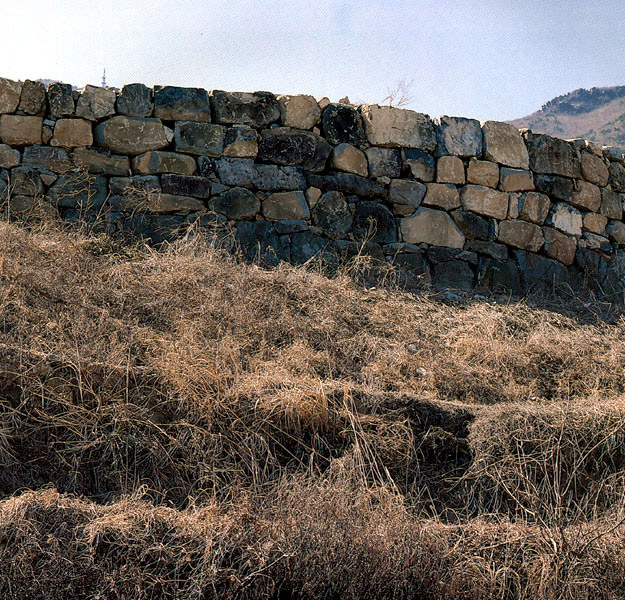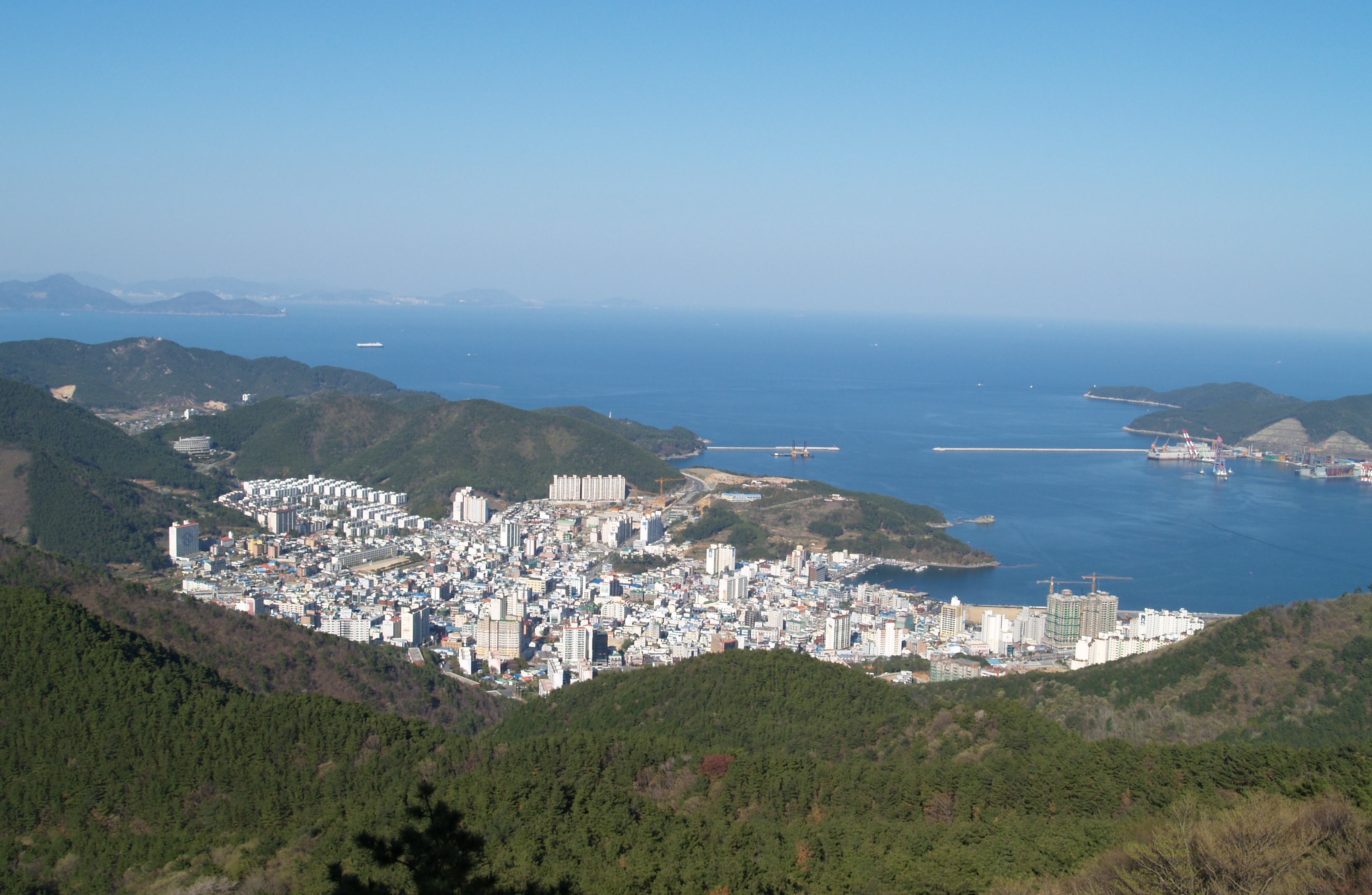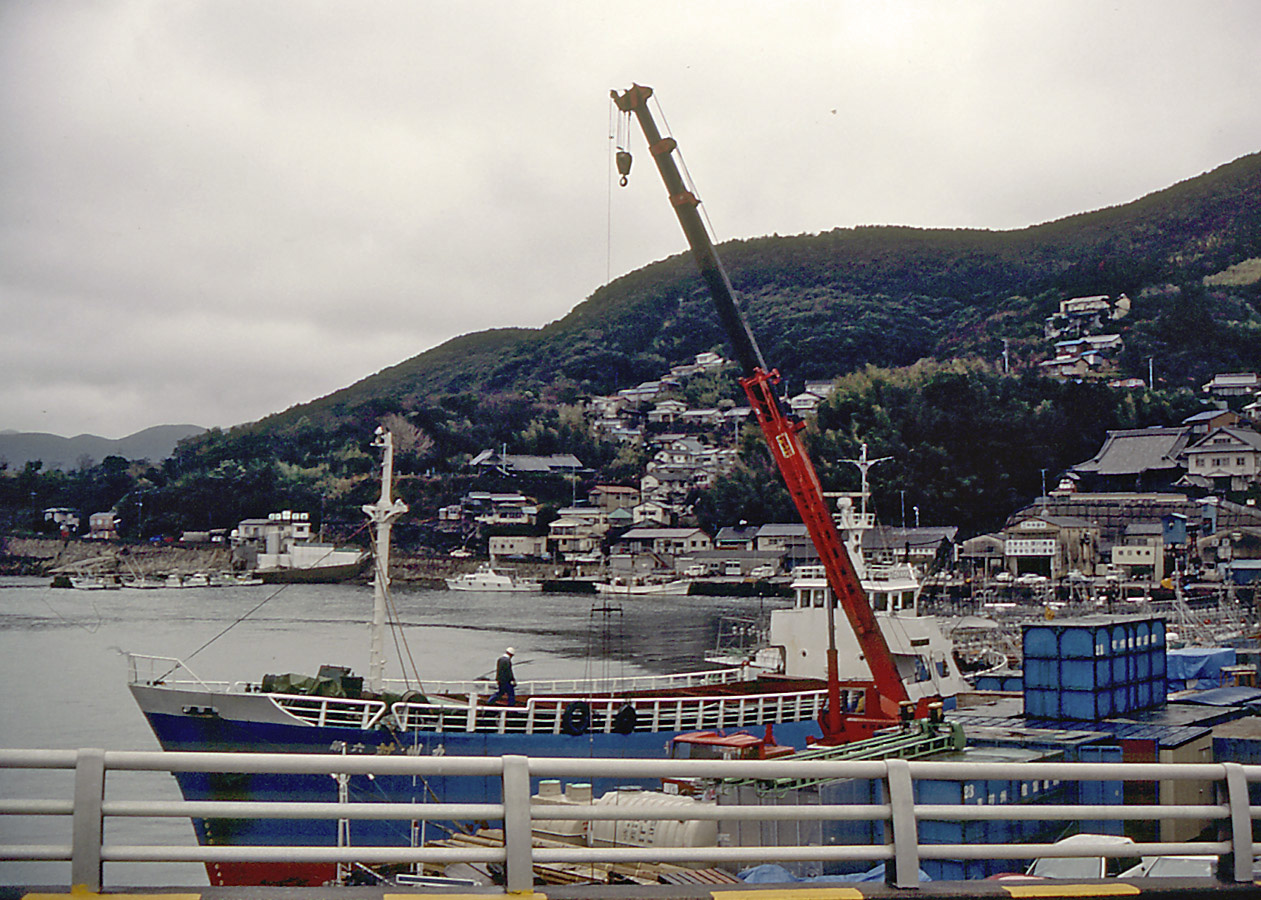|
Geoje
Geoje ( Hangeul: ; Hanja: 巨濟; ) is a city located in South Gyeongsang province, just off the coast of the port city of Busan, South Korea. Daewoo Shipbuilding & Marine Engineering (former Daewoo Shipyard) in Okpo and Samsung Heavy Industries (SHI) in Gohyeon are both located on Geoje Island. The city also offers a wide range of tourist sights. The city is made up of a number of islands, of which by far the largest is Geoje Island. There are multiple dong in the city: Jangpyeongdong, Okpo-dong and Gohyeon. Etymology Geoje is Korean for "''great rescue''", from the syllables "''geo''" () meaning great, and "''je''" () meaning rescue. History Geoje has a history stretching back thousands of years. Various artifacts dating back to the Neolithic era have been found at archaeological digs on Naedo, Sandaldo, and Isudo. While no written history can be found from this era, the digs show evidence of numerous small establishments along the coasts. The first written mention of Geoj ... [...More Info...] [...Related Items...] OR: [Wikipedia] [Google] [Baidu] |
Jangpyeongdong
Jangpyeong also referred to as "Jangpyeong-dong" 장평동 (長坪洞) is a neighborhood "dong" (동) within Geoje city, Gyeongsangnam-do (거제시, 경상남도). It has an area of 5.86 km2, and a population of 29,867 people consisting of 11,057 households.장평동의 일반현황 2011년 6월 23일 확인 From 1979 it has been the home of the complex (삼성중공업). History *1414AD (King 's 14th year (태종14년)): Geochang and Geoje are unified under the name of Geojehyeon (거제현). *1423AD ...[...More Info...] [...Related Items...] OR: [Wikipedia] [Google] [Baidu] |
Gohyeon
Gohyeon-dong is the central dong within the city of Geoje-si. The City Hall, stadium, Intercity bus terminal, and many businesses and homes are located there. When Geoje City is mentioned, it usually refers to Gohyeon-dong or Jangpyeong-dong. Points of Interest include * Geoje POW Camp Geoje-do POW camp ( ko, 거제도 포로수용소, zh, 巨济岛戰俘營) was a prisoner of war camp located on Geoje island at the southernmost part of Gyeongsangnam-do, South Korea. It is considered the largest of the UNC established camps. ... * Gohyeon fortress External linksOfficial website {{coord, 37, 33, N, 127, 25, E, display=title, region:KR_type:city_source:GNS-enwiki Geoje Neighbourhoods in South Korea ... [...More Info...] [...Related Items...] OR: [Wikipedia] [Google] [Baidu] |
Okpo-dong
Okpo is a neighborhood in the city of Geoje in South Gyeongsang Province, South Korea. The village is located on the eastern coast of Geoje Island and a center of the island. Geoje in Korean means "great rescue", from the syllables "geo" (Korean: 거; Hanja: 巨) meaning great, and "je" (Korean: 제; Hanja: 濟) meaning rescue. The Daewoo Shipbuilding & Marine Engineering (DSME) shipyard is located close to the town. A large portion of DSME employees live in Okpo, and DSME jackets are a common sight in the town at night. There are very few standalone houses in Okpo and most residential accommodation is fulfilled by high-rise apartments. Rent is high. There are a number of local accommodation agencies offering apartments for rent to incoming foreigners, as well as other supporting services. Okpo has a large foreign transient population due to the shipyards. As a result there is a 'Foreigner's Club' by the Admiral Hotel which is run by the local expat residents themselves. There a ... [...More Info...] [...Related Items...] OR: [Wikipedia] [Google] [Baidu] |
Geoje Island
Geojedo or Geoje Island (also McCune–Reischauer: Kŏje Island) is the principal island of Geoje City, on the southern coast of Gyeongsangnam-do province, South Korea. It is joined to land by two bridges from nearby Tongyeong. Gohyeon is the largest town on the island. The Busan–Geoje Bridge was opened in December 2010 and provides a more direct connection to the city of Busan. Geoje Island covers an area of , the second largest island in South Korea (second to Jeju Island). The landscape features several peaks: Gara (), Gyerong (), the skirmisher mountain (), Daegeum () and Googsabong (). Geojedo is known for its rich deposits of granite. The southern belt of Geojedo, together with part of Namhaedo in Namhae County, belongs to Hallyeo Maritime National Park. Geoje Island features several natural harbors. Shipbuilding is the largest industry on the island. The second and third largest shipyards in South Korea are both located on the island, Daewoo Shipbuilding and ... [...More Info...] [...Related Items...] OR: [Wikipedia] [Google] [Baidu] |
Korean War
{{Infobox military conflict , conflict = Korean War , partof = the Cold War and the Korean conflict , image = Korean War Montage 2.png , image_size = 300px , caption = Clockwise from top:{{Flatlist, * A column of the U.S. 1st Marine Division's infantry and armor moves through Chinese lines during their breakout from the Chosin Reservoir * UN landing at Incheon harbor, starting point of the Battle of Incheon * Korean refugees in front of a U.S. M46 Patton tank * U.S. Marines, led by First Lieutenant Baldomero Lopez, landing at Incheon * F-86 Sabre fighter aircraft , date = {{Ubl, 25 June 1950 – 27 July 1953 (''de facto'')({{Age in years, months, weeks and days, month1=6, day1=25, year1=1950, month2=7, day2=27, year2=1953), 25 June 1950 – present ('' de jure'')({{Age in years, months, weeks and days, month1=6, day1=25, year1=1950) , place = Korean Peninsula, Yellow Sea, Sea of Japan, ... [...More Info...] [...Related Items...] OR: [Wikipedia] [Google] [Baidu] |
Yi Sun-sin
Admiral Yi Sun-sin (April 28, 1545 – December 16, 1598) was a Korean admiral and military general famed for his victories against the Japanese navy during the Imjin war in the Joseon Dynasty. Over the course of his career, Admiral Yi fought in at least 23 recorded naval engagements, all against the Japanese. In most of these battles, he was outnumbered and lacked necessary supplies. He nonetheless won battle after battle. His most famous victory occurred at the Battle of Myeongnyang, where despite being outnumbered 333 (133 warships, at least 200 logistical support ships) to 13, he managed to disable or destroy 31 Japanese warships without losing a single ship of his own.Yi Sunsin, Nanjung ilgi, p. 314 Yi died from a gunshot wound at the Battle of Noryang on 16 December 1598, the closing battle of the Imjin War. Yi is regarded as one of the greatest naval commanders in history, with commentators praising his strategic vision, intelligence, innovations, and personality. ... [...More Info...] [...Related Items...] OR: [Wikipedia] [Google] [Baidu] |
Japanese Invasions Of Korea (1592–1598)
The Japanese invasions of Korea of 1592–1598 involved two separate yet linked invasions: an initial invasion in 1592 (), a brief truce in 1596, and a second invasion in 1597 (). The conflict ended in 1598 with the withdrawal of Japanese forcesTurnbull, Stephen. Samurai Invasions of Korea 1592–1598, p. 85 from the Korean Peninsula after a military stalemateHistory of the Ming chapter 322 Japan "前後七載 (For seven years),喪師數十萬 (Hundreds of thousands of soldiers were killed),糜餉數百萬 (Millions of cost of war was spent),中朝與朝鮮迄無勝算 (There were no chances of victory in China and Korea),至關白死兵禍始休。 (By Hideyoshi's death ended the war.)" in Korea's southern provinces. The invasions were launched by [...More Info...] [...Related Items...] OR: [Wikipedia] [Google] [Baidu] |
Yi Jong Mu
Yi Jong-mu (1360–1425) was a Korean general who led the Oei Invasion of Tsushima Island in 1419. He was noted for leading a fleet of 227 ships and 17,285 soldiers which landed at the Tsushima Island in Aso Bay on June 19, 1419, which was met with little resistance. General Sō Sadamori, the Daimyo of Tsushima, proposed a treaty to the Joseon court in September, 1419. His conquest not only rescued victims taken by Japanese pirates including 146 Chinese and 8 Koreans, but also put an end to Japanese pirate raids in Korea and China, as well as paving the way for special trade relationships in between Joseon Korea and the Sō clan of Tsushima Island. See also *History of Korea *Military history of Korea *Military history of Japan *Joseon Dynasty Joseon (; ; Middle Korean: 됴ᇢ〯션〮 Dyǒw syéon or 됴ᇢ〯션〯 Dyǒw syěon), officially the Great Joseon (; ), was the last dynastic kingdom of Korea, lasting just over 500 years. It was founded by Yi Seong-gye in July ... [...More Info...] [...Related Items...] OR: [Wikipedia] [Google] [Baidu] |
Tsushima Island
is an island of the Japanese archipelago situated in-between the Tsushima Strait and Korea Strait, approximately halfway between Kyushu and the Korean Peninsula. The main island of Tsushima, once a single island, was divided into two in 1671 by the Ōfunakoshiseto canal and into three in 1900 by the Manzekiseto canal. These canals were driven through isthmuses in the center of the island, forming "North Tsushima Island" ( Kamino-shima) and "South Tsushima Island" (Shimono-shima). Tsushima also incorporates over 100 smaller islands, many tiny. The name ''Tsushima'' generally refers to all the islands of the Tsushima archipelago collectively. Administratively, Tsushima Island is in Nagasaki Prefecture. The island group measures about by and had a population of about 34,000 . The main islands (that is, the "North" and "South" islands, and the thin island that connects them) are the largest coherent satellite island group of Nagasaki Prefecture and the eighth-largest in Japan ... [...More Info...] [...Related Items...] OR: [Wikipedia] [Google] [Baidu] |
Myeongjong Of Goryeo
Myeongjong of Goryeo (8 November 1131 – 3 December 1202) (r. 1170–1197) was 19th monarch of the Goryeo dynasty of Korea. He was the third son of King Injong. Although it was intended that Injong's second son should succeed his father,It was said that when Injong was choosing an heir, he preferred his second son for his keen insight and wisdom; however, his older brother came to power, and banished him out of jeolousy. he was assassinated because Jeong Jung-bu feared that he might become a threat to him in the future. Myeongjong was a weak king, and was merely on the throne to show the general populace they still had a king, as the true rulers were the military leaders. His reign saw constant bloodshed as well as the deaths of the rebels Chung Jung-bu, Yi Ui-bang, and Yi Ui-min (not related to Yi Ui-Bang) but also the hero, Gyeong Dae-seung (General Gyeong was in fact the most loyal of the military leaders. Yet Myeongjong hated and mistrusted him because of his popularity ... [...More Info...] [...Related Items...] OR: [Wikipedia] [Google] [Baidu] |
Jeong Jung-bu
Jeong Jung-bu (1106 – 18 October 1179) was a medieval Korean soldier and military dictator during the Goryeo Dynasty (918–1392). He was a career soldier, qualified on military part of civil service examination. He was most noted for leading a coup d'état in 1170 (''Revolt of military officers''), dethroning the king and beginning of 100-year military reign in Korea. Early career Jeong was born in 1106; he learned martial arts and military tactics in his early days. He was often reported to be 7-foot-tall giant with great confidence and intelligence. He was a diligent soldier, and his loyalty earned him the trust from the king. He went through a slow promotion and later became Chief of General Staff. At the time he became a soldier, the Goryeo Dynasty had a policy that put the civilian power over military. The policy benefited the dynasty well during its early days, and many civilian officials were also able military commanders, such as Gang Gam-chan and Yoon Gwan. However, ... [...More Info...] [...Related Items...] OR: [Wikipedia] [Google] [Baidu] |




